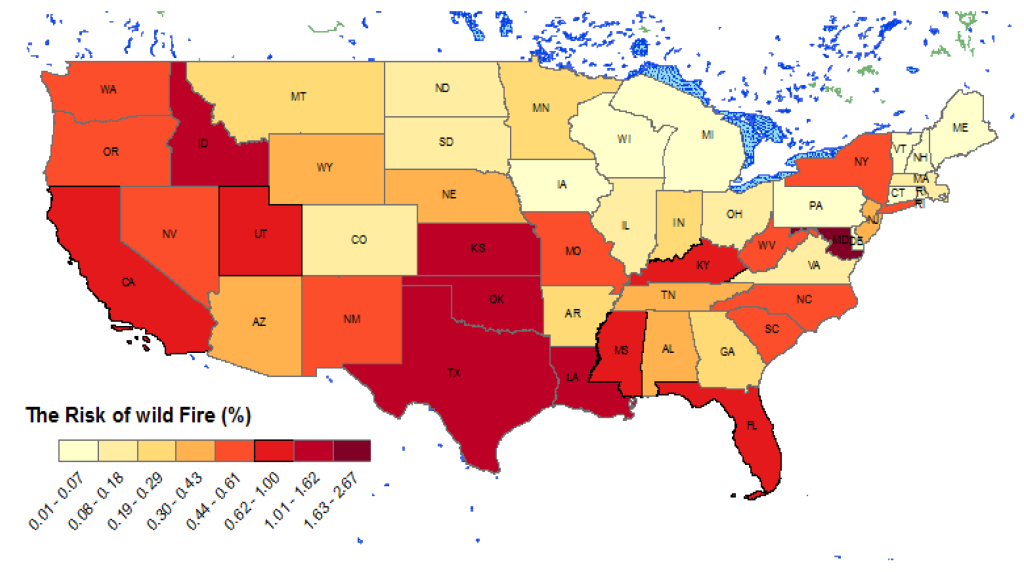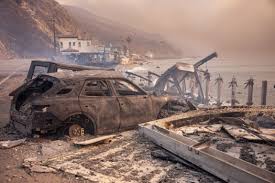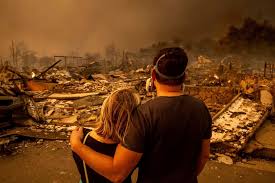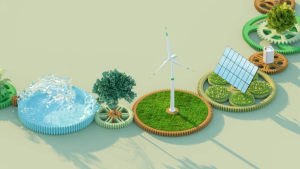You have probably heard about the fires ravaging the West by now. They’re all over the news. It’s devastating—property lost, families displaced, and years of development undone in mere hours. Let’s take a closer look at what’s happening so you’re in the know.

For the longest time, the West has been plagued by wildfires, a recurring disaster fueled by dry seasons, high winds, and rising global temperatures. Last year alone, fires scorched vast areas of land, leaving trails of destruction across the region. The devastating Maui wildfire in Hawaii, one of the deadliest in U.S. history, claimed lives, wiped out entire neighborhoods, and left the landscape unrecognizable. Meanwhile, California faced a relentless fire season that stretched resources thin and forced thousands to evacuate their homes.
So, why does this happen year after year?
These wildfires aren’t just random acts of nature—they’re fueled by a combination of factors that make the West particularly vulnerable year after year.
Firstly, the region’s dry climate and prolonged droughts create a tinderbox effect, leaving vegetation parched and highly flammable. But it’s not just the lack of rain—it’s the emergence of “fire weather.” This term refers to the hot, dry conditions coupled with low humidity and strong winds that create the ideal environment for fires to ignite and spread explosively. Climate change has intensified these patterns, extending the fire season and making fires larger and more frequent.
Rising global temperatures only add fuel to the fire—literally. Warmer weather accelerates snowpack melt, leaving less moisture to sustain forests during the hotter months. This creates longer dry periods where fire weather becomes a near-constant threat.
Human activity plays its part, too. Accidental sparks from campfires, power lines, or even carelessly discarded cigarettes can ignite massive infernos under these conditions. Urban expansion also pushes communities closer to fire-prone areas, increasing the stakes each year.
Finally, forest mismanagement has compounded the crisis. Decades of suppressing natural fires have allowed dead trees and underbrush to accumulate, creating a powder keg ready to ignite during fire weather conditions.
At the time of writing this, The current wildfires in Los Angeles are devastating, with multiple fires causing significant destruction and loss. The Palisades Fire, which began in the Pacific Palisades neighborhood, has burned nearly 20,000 acres since it broke out earlier this week.
In addition to the Palisades Fire, other significant fires include the Eaton Fire and the Hurst Fire, each contributing to the widespread devastation across the region. These fires have collectively destroyed over 10,000 structures and resulted in at least 10 fatalities.

The situation remains critical, with strong winds and dry conditions exacerbating the spread of the fires. Firefighters are working tirelessly to contain the blazes, but the challenges posed by the terrain and weather conditions make their efforts increasingly difficult.
I heard someone asking recently, “Why don’t we just use the seawater nearby to put out the fires?” It’s a fair question—after all, with so much water right there, it seems like an obvious solution. But it’s not as simple as it sounds.
Using seawater presents a logistical challenge. Transporting massive amounts of water to the heart of a wildfire requires specialized equipment, like helicopters or planes, which are costly and not always readily available. Even when they are, these methods are best suited for small, targeted drops rather than the vast, sprawling infernos that wildfires often become.
There’s also the issue of salt. Seawater contains high levels of salt, which can damage ecosystems and render soil less fertile. Dumping large quantities of saltwater over land risks turning recovering forests into barren wastelands, making it harder for nature to bounce back after the fire.
Firefighting efforts focus on more effective methods, like creating firebreaks to stop the fire’s spread, using freshwater from reservoirs, or dropping fire retardants to slow the flames. But even these approaches are limited when faced with the sheer scale and intensity of today’s wildfires.
As Los Angeles continues to battle these devastating wildfires, understanding the complexities of firefighting efforts and the limitations faced by emergency responders is crucial. The community’s resilience and the relentless work of firefighters offer hope, but the path to recovery will undoubtedly be long and challenging.
In light of these challenges, it’s clear that the impact of wildfires goes far beyond the immediate destruction. As we focus on recovery and rebuilding, we must also consider how we can better prepare for future challenges. This isn’t just about fighting fires; it’s about understanding the environment we live in and finding ways to coexist with it more sustainably.

The increasing frequency and intensity of wildfires call for a collective effort to ensure that we’re not only responding effectively but also taking proactive steps toward long-term solutions. By embracing innovation, building stronger communities, and focusing on prevention, we can work toward a future where these fires become less frequent, and the impact they leave behind is less severe.




















+ There are no comments
Add yours